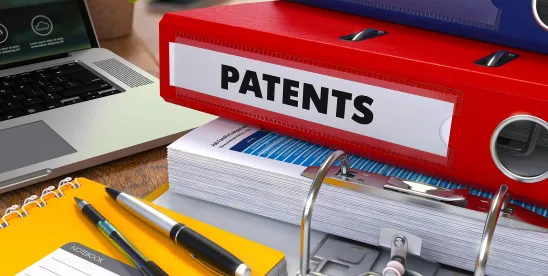Since the iRhythm IPRs on which we blogged recently, there have been two more (actually, many more) decisions that are leaving petitioners scratching their heads. In Dabico, the Acting USPTO Director discretionarily denied an IPR petition because of “settled expectations,” the same rationale as in iRhythm. The Acting Director went further and criticized the petitioner for not making more arguments against discretionary denial than the patent owner advanced for discretionary denial. In Ericsson, the Acting Director discretionarily denied an IPR petition because the patent owner had dismissed the patent from the underlying litigation.
Petitioners must be feeling whipsawed. iRhythm and other decisions since then, such as Cambridge Industries, penalize petitioners for waiting to be sued on a patent before filing an IPR, even though the petitioner would have had no reason to worry about the patent before being sued. Yet Ericsson penalizes a petitioner for pursuing an IPR on a patent that the petitioner is (no longer) worried about. Petitioners effectively are encouraged to file more IPR petitions, against every potential threatening patent, rather than just the one(s) on which the petitioner is sued. The Acting Director also encourages petitioners to make third-party prior art submissions to the USPTO, creating more work for examiners, rather than reducing their workloads. Dabico piles on petitioners by penalizing them for not anticipating everything the Acting Director might say about discretionary denial, independent of any of the patent owner’s arguments. All the roads that the Acting Director is opening to decrease USPTO workload appear to lead to greater USPTO workload.
What are petitioners to do?
File IPRs Sooner and Potentially Make the USPTO Do More Work Unnecessarily?
Companies introduce new products as new patents issue, and sometimes conduct freedom to operate (FTO) analyses to determine whether any of the new products potentially infringe an issued patent. Different kinds of patent properties can turn up. Sometimes there are patents that have been issued for a while; sometimes there are patents that are newly issued; sometimes there are pending patent applications that have not yet issued. At the time of product introduction, a company may have no apprehension of being sued for infringement. At that time, the company is certainly not in a position to predict who might sue, and on which patent(s).
In remarks during a recent patent conference, Acting Director Stewart said that the USPTO wanted to encourage early challenges to patents, either by submitting prior art in pending applications via third party submissions, or by attacking newly issued patents in post-grant review (PGR) proceedings brought within nine months of patent issuance. The purpose for this new approach, as stated in the March 25 Guidance, relates to current USPTO workload.
Third party submission of prior art is a “fire and forget” approach. If a company has invalidating prior art for a patent of interest, once the company submits the prior art in a third party submission, the company has no further input as to whether and how well the examiner applies that prior art, and no influence on how strongly the examiner resists the patent owner’s arguments. And any resulting patent is presumed valid over the disclosed prior art. Third party submissions are thus risky and potentially counterproductive for challengers. And they make more work for examiners, not less.
PGRs are also risky for challengers, even though they have more input than for a third party submission, because patent claims may be ratified over a wide variety of types of legal challenges. PGRs are also expensive, and more expensive than IPRs because, not only are the USPTO fees higher, the grounds for challenge in PGRs are broader than in IPRs and therefore entail more work to prepare and file them. PGRs are more work for the USPTO, not less.
And then there are older patents, which can turn up during an FTO analysis. A company with a newly introduced product is faced with a multi-pronged dilemma regarding these. Under the reasoning in Dabico and the Acting Director’s comments, petitioners should seek to invalidate these patents. But IPR petitions can cost hundreds of thousands of dollars apiece. Filing multiple patent challenges, rather than waiting to be sued, would appear to result in more IPRs than if a patentee were to wait. Challenging patents early and often would impose more work on the USPTO, not less.
Moreover, if the patents are old enough, “settled expectations” may still draw a discretionary denial of petitions against those patents, even if the petitioner did not wait to be sued.
Still further, if a petitioner who has not been threatened with infringement litigation manages to get an IPR proceeding instituted, but loses in the final written decision, the petitioner may not have standing to appeal the decision. (See our earlier blog post in which we cited Allgenesis, Platinum Optics, and Incyte as examples of Federal Circuit decisions finding lack of standing.) After a FWD finding patentability is issued, if a patent owner waited 64 days (one day longer than the maximum 63 days for a petitioner to appeal a final written decision) to assert the subject patent in district court, the petitioner would then be stuck with the PTAB’s finding of patentability.
This apparent requirement that companies take an early shotgun approach to filing IPR petitions increases costs for companies and patentees, increases work for the PTAB, and may strip companies of the appeals they would have been entitled to had they waited to be sued.
File IPRs After Being Sued and Potentially Make the USPTO Do More Work Unnecessarily?
Under 35 U.S.C. § 315(b), an accused infringer has one year from being served with a patent infringement complaint in which to file an IPR petition. Petitioners have learned that waiting until too close to the one year mark to file the petition can weigh against institution if the underlying patent infringement lawsuit has progressed very far. But waiting to file can allow time for a patent owner to serve infringement contentions, identifying which claims are at issue and potentially giving the petitioner clues regarding the patent owner’s interpretation of asserted claims. As a result, the petitioner can focus its challenge on the claims that are asserted and might be able to leverage claim interpretation admissions from the patent owner that can help with reading asserted claims on prior art. Sometimes there even is time for a petitioner to receive amended infringement contentions, as in another IPR involvingthe same parties as in Ericsson. An additional set of infringement contentions can provide even more clues about the patent owner’s claim interpretation positions. In this other IPR, the petitioner made this argument, but did not go into detail. The Acting Director relied on the lack of detail to find that these additional infringement contentions did not constitute sufficient justification for waiting to file the IPR petition. Accordingly, the Acting Director granted discretionary denial.
In Ericsson, the patent owner determined that it should dismiss one of the patents-in-suit with prejudice from the underlying district court proceeding. The accused infringers agreed, so the parties filed a stipulated motion to dismiss, which the court granted. The Acting Director used this dismissal with prejudice as a reason to discretionarily deny the IPR petition for that patent. The reasoning was that there was no point in expending effort to determine the validity of a patent with which the petitioner was no longer threatened. There are other recent discretionary denial decisions, such as this one, to the same effect.
As the above shows, the Acting Director has provided many new paths that lead to discretionary denial of IPR and PGR petitions. As the saying goes, all roads lead to Rome. But in reality, “Rome” may be more work for the PTAB and more expense for patent challengers.
Key Takeaways:
Anticipate the Acting Director’s Arguments, Even If the Patent Owner Did Not Make Them.
It is one thing to respond to patent owner arguments for discretionary denial. It is another to try to make counterarguments on issues that the patent owner did not raise. The rules have changed rapidly in the last few months. Arguments that patent owners and petitioners would not have thought to address (such as “settled expectations”), have become frequent bases for discretionary denial of petitions.
Use Your Words (All 14,000 of Them).
In our iRhythm blog, we encouraged petitioners to take full advantage of the 14,000 word limit on discretionary denial briefs to argue anything they can think of to oppose a patent owner’s request for discretionary denial. Dabico clearly would seem to provide the same encouragement: If a petitioner thinks the USPTO might rely on an argument that the patent owner did not raise in its request, the petitioner should try to anticipate what that reliance would have been, and counter it. Clairvoyance may become key.
Anything that might explain the timing of the IPR petition filing, or counter the expected “settled expectations” argument from the USPTO, could help. For example, NPEs often acquire patents from companies or individual inventors, sometimes relatively late in the lives of those patents. If the new patent owner files suit shortly after acquiring a relatively old patent, as in Sig Sauer, it is fair to ask whether the new owner should inherit the alleged “settled expectations” of previous owners. If the patent has been sitting unused (and thus unloved) for a long time, are there even any expectations, settled or otherwise, to inherit?
Identify Recent Trends and Remind the USPTO of Them.
One such trend is the use of “settled expectations,” which have played a large role in the slew of decisions discretionarily denying institution of IPRs and PGRs. The trend, apparently, is to use “settled expectations” to dismiss IPR petitions on patents that are seven years old or more, as in these two IPRs, as compared to these three IPRs, irrespective of when the patent owner acquired the patents. Depending on whether one is petitioning for or resisting institution of an IPR or PGR, the patent’s age could be used proactively when paired with citations to the relevant discretionary denial decisions.





 />i
/>i

